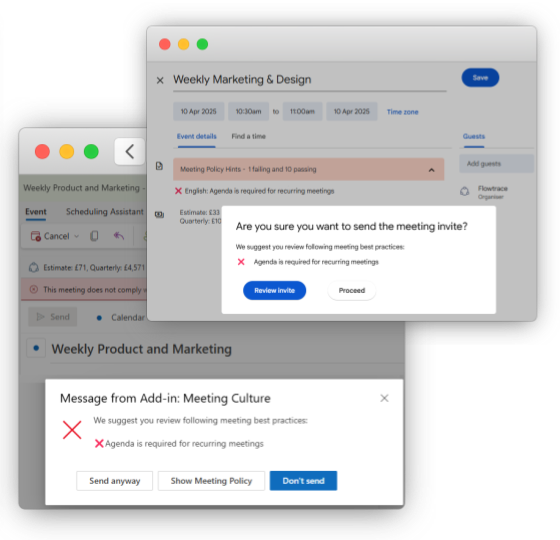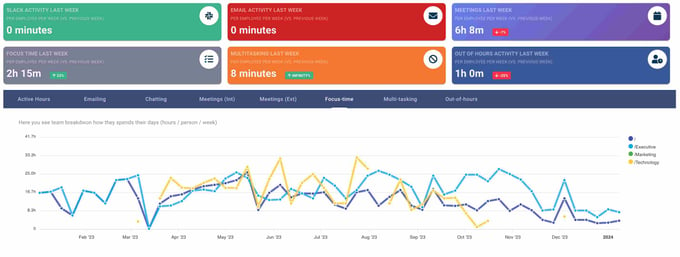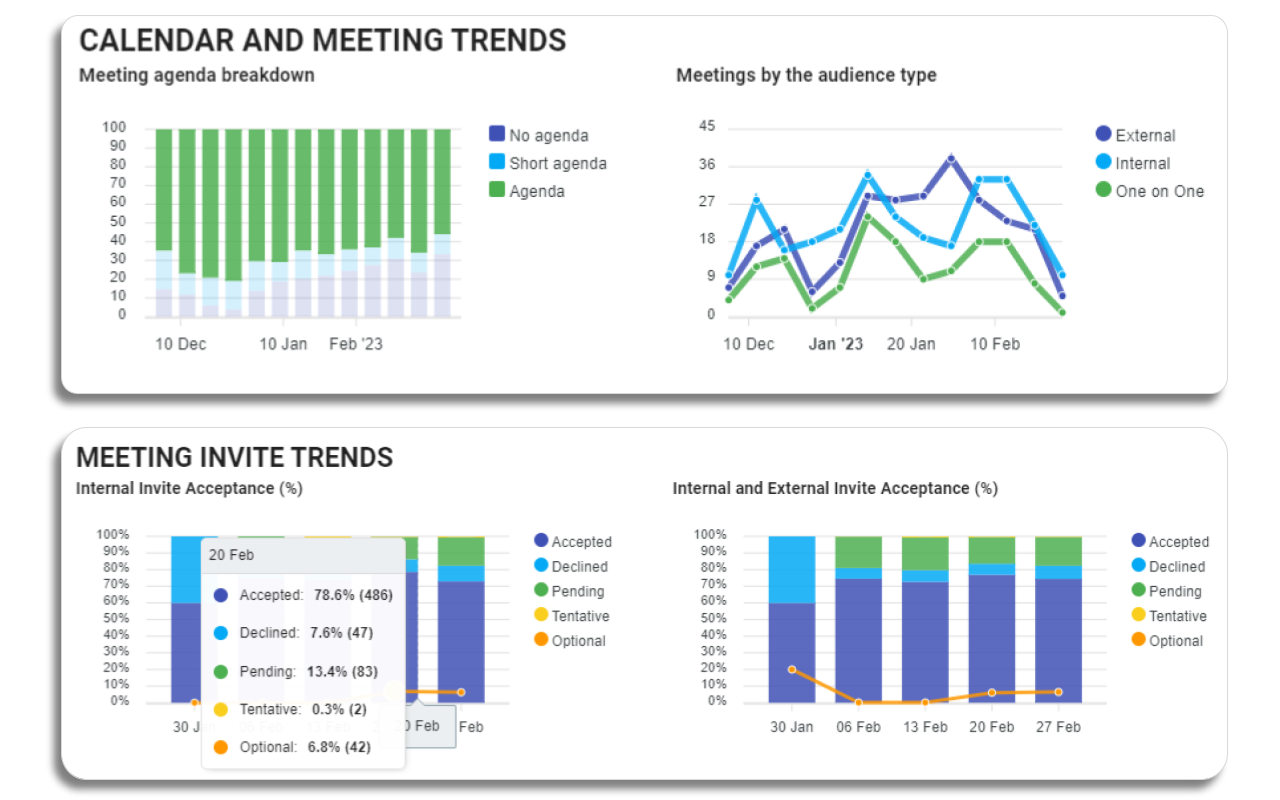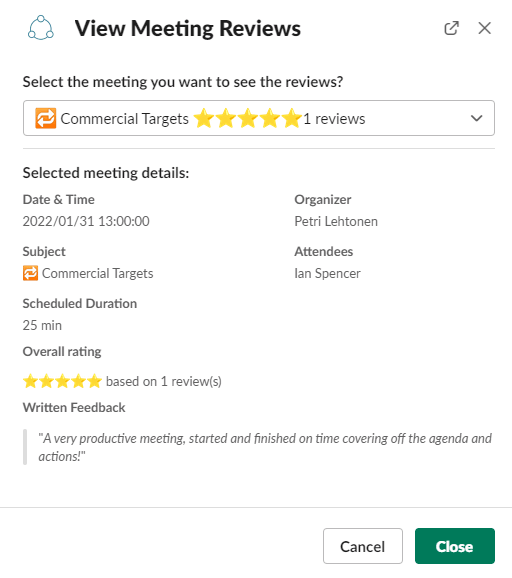How to Have Less Meetings: Strategies for a More Productive Workplace
Have less meetings and boost productivity in the workplace. Learn how to identify unnecessary meetings, implement alternatives, and maximize...
Cut meeting overload by 50% with proven strategies. Identify unnecessary meetings, implement async alternatives, protect deep work time.
Meeting overload reached crisis levels in 2024, with employees now spending 392 hours per year in meetings, a 192% increase since 2020. Microsoft's latest research shows that 62% of workers attend meetings without knowing their purpose, while 45% feel overwhelmed by their meeting load. The real question isn't just "How do I stop having so many meetings?" but "How do I reclaim my workday?".
The solution? Smart meeting management that treats your calendar like the scarce resource it is. This article looks into the strategies and practices that can help organizations and individuals reduce the frequency of unnecessary meetings, thereby enhancing overall productivity and workplace satisfaction.
The shift to hybrid work has intensified meeting proliferation. Remote employees now attend 50% more meetings than their office counterparts, often replacing spontaneous hallway conversations with formal video calls. With 86% of meetings now including at least one remote participant, companies struggle to balance inclusivity with efficiency, leading to "meeting stacking" where employees jump from one video call to another with no break time.
Excessive meetings in the workplace are deeply rooted in both organizational culture and operational habits. A primary factor contributing to this situation is the traditional view of meetings as a fundamental platform for collaboration, decision-making, and information sharing. This perspective often leads to a default reliance on scheduled meetings, even when other communication methods could be more effective.
We invite everyone to meetings to be 'inclusive', but end up wasting everyone's time instead. Half the FOMO buster people in your meetings probably don't need to be there. This escalation reflects a cultural shift towards more collaborative, but often inefficient, work practices. Also, managers in one survey reported that 83% of the meetings on their calendars were unproductive, making excessive meetings even more damaging.
The fear of missing out (FOMO) on critical discussions or decisions can also lead to bloated meeting invites. In many cases, the ease of scheduling meetings with digital tools exacerbates this issue, making it effortless to convene large groups frequently and sometimes unnecessarily.
Understanding these triggers is essential when trying to figure out the answer to - How do I stop having so many meetings? It's not just about reducing the quantity of meetings, but also enhancing their quality. Identifying meetings that could be emails, brief check-ins, or collaborative sessions using meeting analytics tools is a vital step. This understanding helps in shaping a more intentional and strategic approach to scheduling meetings, one that prioritizes productivity and respects the time and contributions of all participants.

To combat unnecessary meetings, leaders must establish clear meeting policies (and rules to validate meeting invites) on when and why a meeting is necessary. This begins with setting criteria for effective communication and deciding whether a meeting is the most efficient way to achieve a particular objective. Here's the key steps before inviting a meeting:
It’s essential to define the purpose of a meeting. Meetings should be reserved for purposes that require synchronous communication, such as brainstorming sessions, decision-making processes requiring immediate feedback, or discussions where non-verbal cues are important.
A study by Steven G. Rogelberg of the University of North Carolina Charlotte indicates that only about 50% of meeting time is effectively used. This highlights the importance of distinguishing between meetings that facilitate productive collaboration and those that could be replaced with more efficient communication methods, like emails or shared documents.
Organizations should implement a policy of meeting minimization. This involves encouraging employees to critically assess the necessity of a meeting before scheduling it. Questions like “Could this be resolved through a brief email exchange or a quick phone call?” or “Is this meeting essential for all invitees?” can help in making this assessment.
Organizations should consider adopting a 'meeting-free day' policy, where one day a week is kept free of (internal) meetings. This can increase productivity, as it provides employees with uninterrupted time to focus on deep work.
Regular training sessions on effective meeting practices are crucial. These sessions should cover how to set clear agendas, manage meeting time efficiently, and ensure that every meeting has a clearly defined goal and outcome.
To reduce excessive meetings, promoting asynchronous communication is an essential strategy. Asynchronous communication means people can respond when it works for them. Think emails, Slack messages, or recorded updates. This method of communication offers several benefits in reducing meeting frequency and enhancing overall productivity:
One significant advantage of asynchronous communication is the flexibility it provides. Team members can contribute at times that suit their schedules and work rhythms, leading to more thoughtful and considered responses.
This flexibility is especially beneficial for teams spread across different time zones, as it circumvents the need to find a common meeting time, which can often be inconvenient or disruptive.

Asynchronous methods also allow for more focused work time. Without the interruption of frequent meetings, employees can delve deeper into their tasks, leading to higher-quality work and increased productivity. This uninterrupted time is crucial for tasks that require deep concentration and creative thinking.
Asynchronous communication often leads to better documentation of discussions and decisions. Tools like shared documents or project management platforms automatically create a record of communications, making it easier to track progress, decisions, and action items. This level of documentation is often missing in traditional meetings, where key decisions may be lost or misremembered.

The implementation of clear agendas and objectives for each meeting is also essential in enhancing their effectiveness and efficiency. An agenda serves as a roadmap, guiding the meeting's direction and ensuring that all necessary topics are addressed. It also provides participants with a clear understanding of the meeting's purpose, allowing them to prepare adequately and contribute effectively. Key points to consider:
Establishing a detailed agenda involves listing specific items to be discussed, allocating time for each item, and identifying who will lead each part of the conversation. This approach not only streamlines the meeting but also discourages deviation from relevant topics, minimizing time wastage. It can also help in prioritizing the most critical issues and ensure that the meeting's objectives align with organizational goals.
Setting specific objectives for each meeting is equally important. Meeting objectives provide a clear target for what the meeting should accomplish, whether it's making a decision, brainstorming ideas, or disseminating information. When objectives are clearly defined, participants are more likely to stay focused and engaged, leading to more productive discussions.
Meetings with clear objectives and agendas are often shorter and more productive. They eliminate unnecessary discussions and provide a sense of accomplishment when goals are met. This efficiency not only saves time but also enhances the overall satisfaction of participants, as they feel their time is being used effectively.
Creating a workplace culture where it's acceptable and even encouraged for employees to decline non-essential meetings is a critical step in optimizing the efficiency and effectiveness of an organization. Empowering employees to make judicious decisions about their attendance can significantly reduce time spent in unproductive meetings and enhance overall productivity. Some key things to consider:
Establish clear guidelines on what constitutes a necessary meeting. Employees should be trained to assess the relevance of a meeting to their specific roles and current projects. If a meeting does not directly contribute to their work or if the information can be communicated through other means, it should be acceptable for them to decline the invitation.
Communication is key in this process. Employees should feel comfortable conveying their decision to decline a meeting. This can be facilitated by encouraging open dialogue about meeting attendance and its impact on work. Managers should lead by example, showing understanding and support when team members choose to opt out of meetings that are not critical to their tasks.
Providing alternatives for participation, such as submitting input beforehand or reviewing meeting minutes post-meeting, can ensure that employees remain informed without necessitating their direct attendance.

To continuously improve meeting efficiency and effectiveness, it's essential for organizations to implement regular reviews and feedback mechanisms. These practices allow for a periodic assessment of meeting culture and the identification of areas for improvement. Some actions to consider:
Regular audits of meeting practices involve analyzing various aspects of meetings over a set period. This might include examining the average length of meetings, the number of attendees, frequency, and the proportion of meetings deemed successful or necessary.
These audits show you exactly where time gets wasted, so you can fix what's broken.
Feedback from employees is equally crucial in this process. Encouraging team members to share their perspectives on the effectiveness of meetings provides valuable insights into what is working well and what isn’t. This feedback can be gathered through surveys, suggestion boxes, or regular check-ins. Questions might focus on whether the meetings have clear agendas, if the discussions are productive, and if the outcomes justify the time spent.
Acting on this feedback is key. When employees see that their input leads to tangible changes, it not only improves meeting practices but also boosts morale and engagement. For instance, if feedback indicates that meetings are often unproductive, management might look into training for effective meeting facilitation or explore alternative communication methods.
Furthermore, creating a culture where feedback is regularly sought and valued encourages continuous improvement. It fosters a sense of ownership and responsibility among employees, as they play a direct role in shaping the meeting culture of their organization.
Utilizing advanced technology like Flowtrace can significantly enhance the efficiency and effectiveness of meeting scheduling in an organization. Flowtrace provides insightful meeting analytics that help in understanding and optimizing meeting practices.
The rise of AI meeting analytics platforms in 2024 has transformed how companies approach meeting optimization. Tools now automatically detect agenda-less meetings, identify recurring participants who never speak, and suggest optimal meeting times based on energy levels and workload data. Companies using AI-powered meeting data insights report 35% fewer unnecessary meetings within the first quarter of implementation.
One of the standout features is the ability to analyze meeting data across the organization. This includes assessing the frequency and duration of meetings, identifying patterns of potential overbooking or meeting clustering, and understanding the impact of meetings on overall productivity. By providing a clear overview of how time is being spent in meetings, leaders can make informed decisions to streamline their schedules.

Flowtrace offers insights into the quality of meetings. By evaluating factors such as participant engagement and the relevance of meetings to organizational goals, these tools can help in identifying meetings that are essential versus those that could be condensed or eliminated. This not only helps in reducing the quantity of meetings but also in enhancing their overall quality.
Furthermore, Flowtrace’s analytics can aid in identifying optimal times for meetings, taking into account the various demands on executives' schedules. This helps in avoiding scheduling conflicts and ensures that meetings are set at times when all key participants can be fully present and engaged.
As we navigate 2025's hybrid workplace, meeting reduction isn't just about productivity, it's about preventing burnout and creating space for deep work. Companies implementing smart meeting policies see 25% productivity gains and 40% improvement in employee satisfaction. Transform your meeting culture from a time drain into a competitive advantage with Flowtrace's AI-powered analytics that make every meeting count.
Have less meetings and boost productivity in the workplace. Learn how to identify unnecessary meetings, implement alternatives, and maximize...
Struggling with too many meetings at work? Learn how to optimize meeting practices, avoid meeting overload, and improve team productivity in this...
Discover the importance of meetings in business and how to maximize their efficiency. Learn how to optimize meetings for better decision-making and...